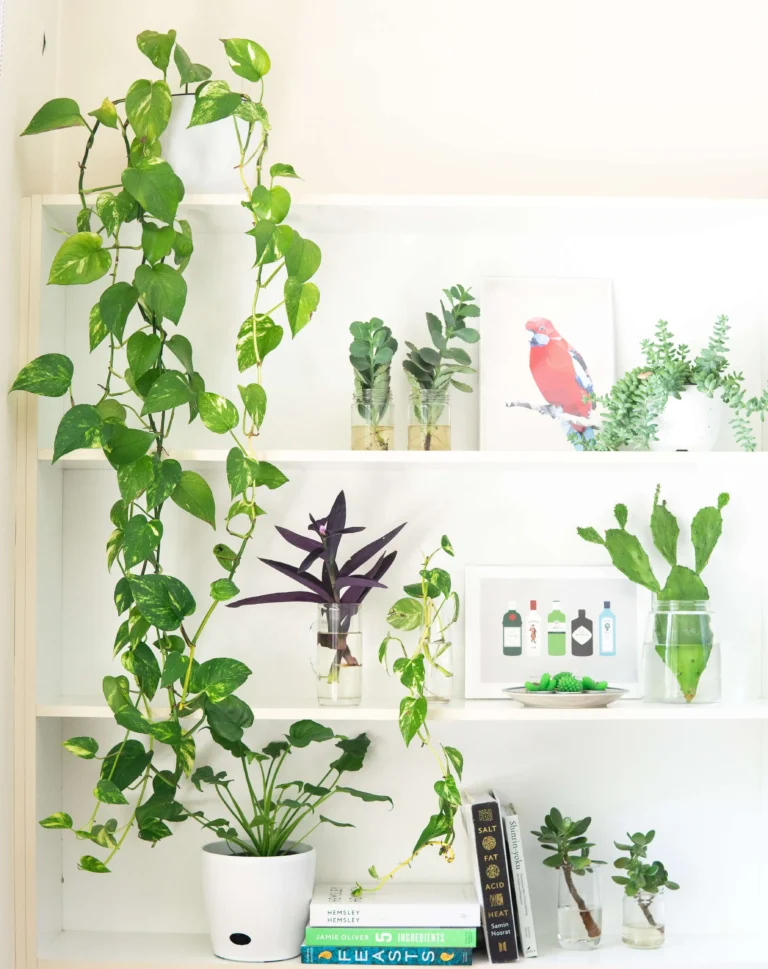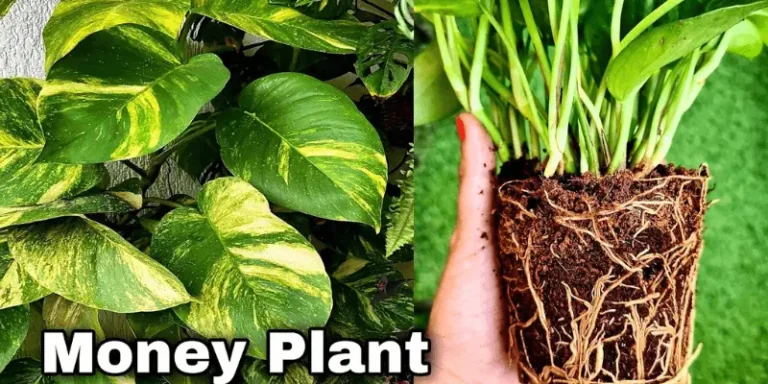Hydrangea Diseases: How To Identify & Treat
Hydrangea species can vary in susceptibility to disease, and disease prevalence can depend on a variety of factors, including climate, soil conditions, and care practices. However, among the common hydrangea varieties, Hydrangea macrophylla, also known as bigleaf hydrangea, is often the most susceptible to diseases such as powdery mildew and leaf spot. This species is particularly vulnerable because of its large, lush leaves and dense foliage, which can create favorable conditions for fungal growth. However, it’s important to note that with proper care and disease management, you can help all types of hydrangea thrive in your garden.
Powdery Mildew in Hydrangeas
Powdery mildew is a common fungal disease that can affect your indoor hydrangea plants, causing unsightly white powdery spots on their leaves. However, with the right knowledge and timely action, you can successfully identify and treat powdery mildew to keep your hydrangeas healthy and vibrant. In this guide, we’ll walk you through identifying and treating powdery mildew in hydrangeas.
Identification of powdery mildew
Visual signs
The most obvious sign of powdery mildew is a powdery, white substance that appears on the leaves of your hydrangea plants. These spots may start small and gradually spread throughout the plant, like a fine dusting of talcum powder. Powdery mildew usually occurs on the upper surfaces of leaves, but can also affect stems and buds.
Leaf loss: As the powdery mildew infection progresses, you may notice other symptoms, such as:
Curling leaves: Infected leaves may curl or twist due to the presence of the fungus.
Yellowing: Leaves may turn yellow or brown, affecting the overall appearance of the plant.
Decreased flowers: In severe cases, powdery mildew can inhibit flower bud formation, causing fewer or smaller flowers.
Powdery mildew treatment
1. Pruning of affected areas
Start by inspecting your hydrangea plants regularly, especially during the growing season. If you see any leaves or stems with powdery mildew, harvest and remove them immediately. Dispose of infected plant material away from your garden to avoid further contamination.
2. Fungicide application
Fungicides can be an effective way to combat powdery mildew. Look for a fungicide labeled for use on hydrangeas and follow the directions for use carefully. It is important to apply the fungicide at the first sign of infection and continue as directed to prevent its spread.
3. Improve air circulation
Powdery mildew thrives in conditions with poor air circulation. To prevent this from recurring, make sure your hydrangea plants are properly spaced. Prune plants as needed to improve airflow, and avoid overcrowding.
4. Watering methods
Maintain proper watering practices for your hydrangeas. Water the base of the plants in the morning to allow the plants to dry out during the day. Avoid overhead watering, as wet leaves can promote powdery mildew growth.
5. Choose resistant varieties.
When choosing hydrangea varieties for your garden, consider choosing those known for their resistance to powdery mildew. Although no plant is completely immune, some varieties are less susceptible to disease.
6. Organic treatment
For those who prefer an organic solution, you can make a homemade spray using a mixture of water and baking soda or neem oil. These natural remedies can help suppress powdery mildew when applied regularly.
Leaf Spot in Hydrangeas
Leaf spot is a common problem that can affect the health and appearance of your beloved hydrangea plants. This fungal disease appears as black spots with well-defined edges on the leaves, which eventually lead to leaf drop and reduced plant vigor. In this guide, we’ll help you identify leaf spot in hydrangeas and provide effective treatment methods to ensure your hydrangeas thrive.
Identification of leaf spot
Visual signs
The primary indication of leaf spot in hydrangeas is the appearance of black spots on the leaves. These spots are usually circular or irregular in shape and can vary in size. They often have distinct, deep edges, which make them stand out against healthy green foliage.
Leaf loss
As leaf spots develop, you may notice additional symptoms:
Yellowing of leaves: Affected leaves may turn yellow, and the area around the spots may be discolored.
Premature leaf drop: Severely infected leaves may drop prematurely, resulting in a low and unhealthy appearance.
Fewer Flowers: A weak hydrangea plant may produce fewer flowers, and the overall vigor of mymedic.es the plant may be reduced.
Treatment of leaf spot
1. Harvesting of infected leaves
Inspect your hydrangea plants regularly for signs of leaf spot. When you identify infected leaves, use sharp, clean pruning shears to remove and dispose of them. This process helps prevent the spread of disease to healthy parts of the plant.
2. Fungicide application
Fungicides can be effective in managing leaf spot. Choose a fungicide specifically formulated for hydrangeas and follow the manufacturer’s directions for use. Generally, fungicides should be applied at the first sign of infection and reapplied as recommended.
3. Improve air circulation
Increasing air circulation around your hydrangeas can reduce conditions that favor the development of leaf spots. Proper spacing between plants, selective pruning to remove dense growth, and adequate ventilation can help keep plants dry and prevent fungal growth.
4. Watering methods
Avoid overhead watering, as wet leaves can promote the spread of fungal diseases such as leaf spot. Instead, water hydrangeas at the base of the plant in the morning, allowing the leaves to dry during the day.
5. Mulch and soil management
Apply a layer of organic mulch around the base of your hydrangea plants. Mulch helps maintain soil moisture and temperature, reducing stress on plants. Additionally, make sure your hydrangeas are planted in well-draining soil to prevent waterlogged roots, which can contribute to leaf spots.
6. Choose disease-resistant varieties.
Consider planting hydrangea varieties known for their resistance to leaf spot. Although no plant is completely immune, selecting resistant varieties can reduce the risk of infection.
Botrytis Blight (Gray Mold) in Hydrangeas
Botrytis blight, also known as gray mold, is a fungal disease that can pose a threat to your beloved hydrangea plants. The disease often appears as a brown or gray mold on flowers and leaves, causing the flowers to wilt and die prematurely. In this guide, we’ll help you identify botrytis blight in hydrangeas and provide effective treatment methods to protect the health and beauty of your hydrangea plants.
Identification of Botrytis Blight
Visual signs
The most obvious symptom of Botrytis Blight is the presence of brown or gray mold on various parts of the hydrangea plant. Key indicators include:
Flower Decay: Affected hydrangea flowers may show brown or gray mold growth, causing them to wilt and die prematurely.
Leaf lesions: You may observe small, water-soaked lesions on the leaves, which may spread and become covered in gray fungal growth.
Blight on stems: Botrytis can also affect stems, causing wilting and browning of the affected area.
Bloom Abnormalities
Infected hydrangea flowers often show abnormalities such as loss of vibrant color, shriveling, and distortion. Healthy hydrangea flowers should be vibrant and well formed.
Botrytis blight treatment
1. Harvesting of affected parts
Start by inspecting your hydrangea plants regularly, especially during humid or damp weather conditions that favor fungal growth. When you notice any symptoms of botrytis blight, carefully cut off any infected flowers, leaves or stems. Dispose of infected plant material away from your garden to avoid further contamination.
2. Fungicide application
Fungicides formulated for hydrangeas can be an effective method of controlling botrytis blight. Follow the manufacturer’s instructions for application, ensuring complete coverage of the plant. Begin treatment at the first signs of infection and continue as prescribed to prevent further spread.
3. Adequate air circulation
Botrytis blight thrives in conditions where there is poor air circulation. To minimize the risk of infection, make sure there is adequate spacing between your hydrangea plants. Prune plants as needed to improve air flow and reduce humidity around plants.
4. Watering methods
Maintain proper watering practices for your hydrangeas. Water the base of the plants in the morning, allowing the plants to dry during the day. Avoid overhead watering, as wet leaves can promote the growth of botrytis.
5. Soil management
Plant hydrangeas in well-drained soil to prevent waterlogged roots, which can make plants more susceptible to botrytis blight. Applying organic mulch around the base of plants can help maintain soil moisture and temperature.
6. Select resistant varieties.
Consider planting hydrangea varieties known for their resistance to botrytis blight. Although no plant is completely immune, selecting resistant varieties can reduce the chance of infection.
Root Rot in Hydrangeas
Root rot is a common problem that can affect the health and life of your beloved hydrangea plants. This soil-borne disease affects the root system, resulting in nutrient depletion, wilting and overall plant failure. In this guide, we’ll help you identify root rot in hydrangeas and provide effective treatment methods to ensure the health of your hydrangea plants.
Identifying the root route
Visual signs
Although root rot mainly affects the underground root system, there are visible signs that can help you identify the problem:
Wilting and yellowing: Infected hydrangeas may show wilting, yellowing or browning of their leaves, even when the soil is moist enough.
Stunted growth: Plants with root rot often exhibit slow growth and reduced vigor.
Root Abnormalities: When examining the root system, you may notice brown, shriveled, or brittle roots. Healthy roots should be firm and white.
Treatment of root rot
1. Remove infected soil.
If you suspect root rot in your hydrangeas, carefully dig around the plant to inspect the root system. Remove any soil that appears infected and throw it away from your garden. This step helps prevent disease from spreading to healthy plants.
2. Prune infected roots.
Using clean, sharp pruning shears, cut off any visibly damaged or rotting roots. Cut cleanly, removing affected parts. It is important to sterilize your harvesting tools between harvests to prevent further contamination.
3. Reapply or reapply.
If root rot is severe and has damaged the root system extensively, consider repotting the hydrangea in fresh, well-drained soil or transplanting to a new location with healthy soil. Have to do. Ensure proper drainage in the newly planted area.
4. Improve soil drainage
To prevent future instances of root rot, focus on improving soil drainage around your hydrangeas. Amending the soil with organic matter, such as compost or peat moss, can help improve drainage. Avoid overwatering, as overly moist soil creates ideal conditions for root rot.
5. Adjust watering methods.
Maintain a balanced watering routine for your hydrangeas. Water deeply and less frequently, rather than shallow, frequent watering. Water the base of the plant, not the foliage, and allow the soil to dry out slightly between waterings.
6. Use fungicides (as a preventative measure)
Although fungicides are not a cure for root rot, you can apply them as a preventative measure to protect healthy roots. Choose a fungicide labeled for hydrangeas and follow the manufacturer’s instructions.
7. Choose resistant varieties.
When choosing hydrangea varieties for your garden, consider choosing ones that are known for their resistance to root rot. These varieties are less susceptible to disease, reducing the risk of infection.
Cercospora Leaf Spot in Hydrangeas
Cercospora leaf spot is a common fungal disease that can affect the beauty and health of your hydrangea plants. The disease is characterized by the development of purple-brown spots on the leaves, which can weaken the plant over time. In this guide, we’ll help you identify Cercospora leaf spot in hydrangeas and provide effective treatment methods to ensure your hydrangeas stay vibrant and thriving.
Identifying Cercospora Leaf Spot
Visual signs
The primary visual indicator of Cercospora leaf spot is the presence of small, round to irregularly shaped spots on the leaves of your hydrangea plant. Key identifying features include:
Purplish-brown spots: These spots are usually purplish-brown in color and may have distinct edges.
Leaf discoloration: Areas around the spots may be discolored or yellow.
Leaf Lesions: Over time, lesions can enlarge and coalesce, causing more extensive damage.
Treating Cercospora Leaf Spot
1. Harvesting of infected leaves
Start by regularly inspecting your hydrangea plants for signs of Cercospora leaf spot. When you identify infected leaves, use clean, sharp pruning shears to remove and dispose of them. This process helps prevent the spread of disease to healthy parts of the plant.
2. Fungicide application
Fungicides formulated for hydrangeas can be an effective way to manage Cercospora leaf spot. Follow the manufacturer’s instructions for application, ensuring complete coverage of the plant. Begin treatment at the first signs of infection and continue as prescribed to prevent further spread.
3. Adequate air circulation
Improving air circulation around your hydrangea plants can help reduce conditions conducive to the development of Cercospora leaf spot. Make sure your plants are adequately spaced, prune them as needed to improve air flow, and avoid overcrowding.
4. Watering methods
Maintain proper watering practices for your hydrangeas. Water at the base of the plants in the morning to allow the plants to dry out during the day. Avoid overhead watering, as wet leaves can encourage the growth of fungal diseases such as Cercospora leaf spot.
5. Soil management
Plant hydrangeas in well-drained soil to prevent waterlogged roots, which can make plants more susceptible to Cercospora leaf spot. Applying organic mulch around the base of plants can help maintain soil moisture and temperature.
6. Choose resistant varieties. Consider planting hydrangea varieties known for their resistance to Cercospora leaf spot. Although no plant is completely immune, selecting resistant varieties can reduce the chance of


